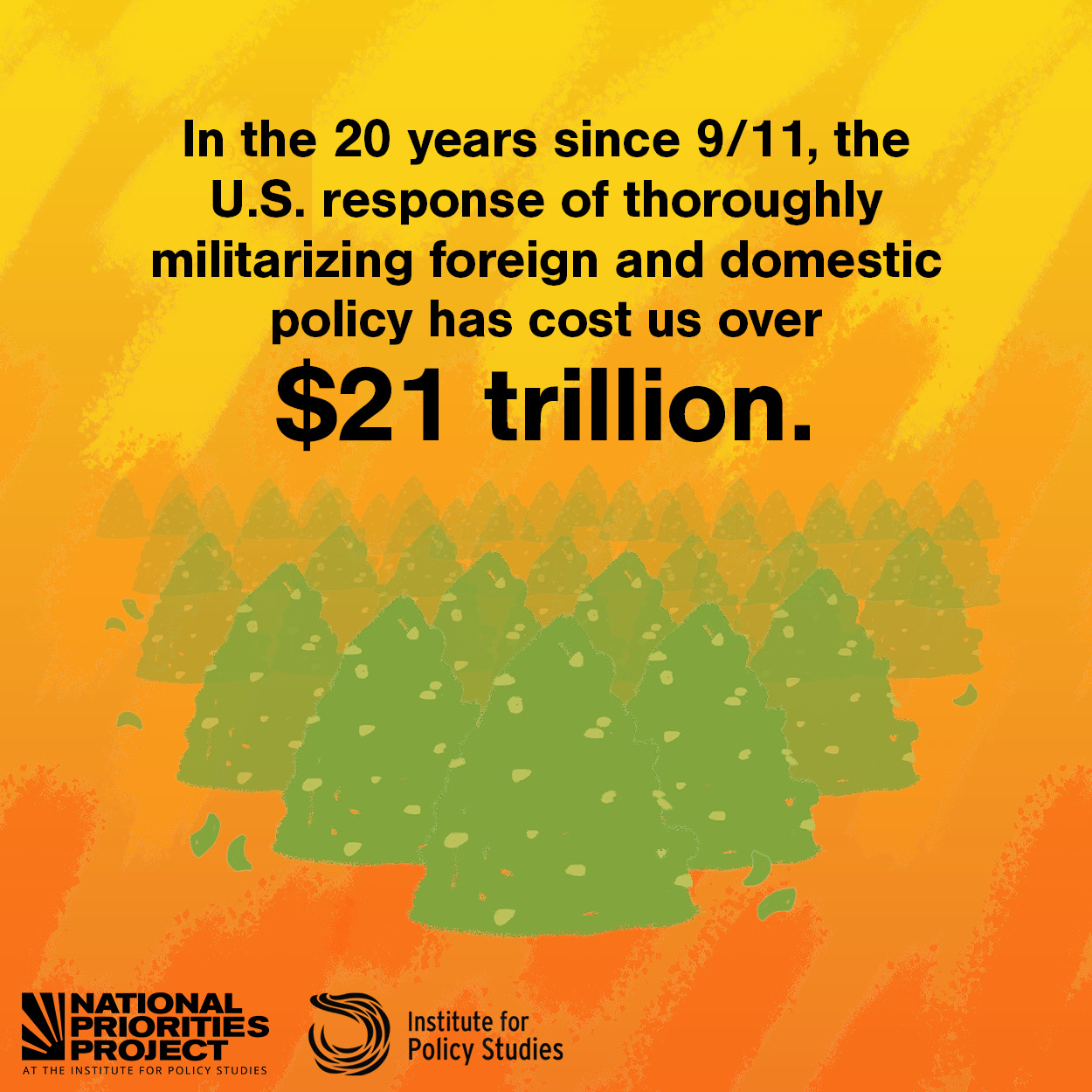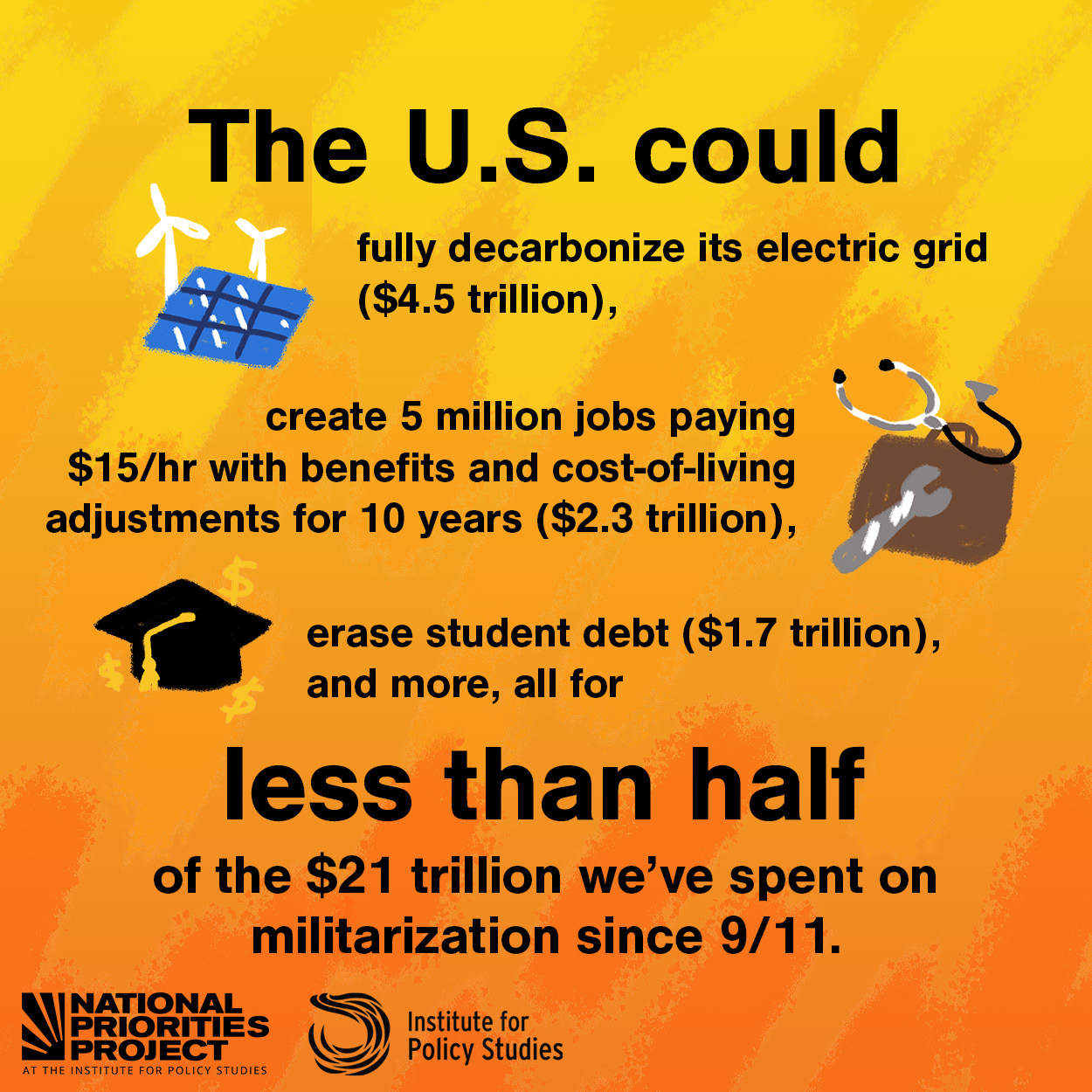State of Insecurity
The Cost of Militarization Since 9/11
Lindsay Koshgarian | Ashik Siddique | Lorah Steichen
Introduction
Twenty years after 9/11, the war on terror has remade the U.S. into a far more militarized actor, both around the world and at home. The human costs of this evolution are many — including mass incarceration, widespread surveillance, the violent repression of immigrant communities, and hundreds of thousands of lives lost to war and violence.
But of course, this militarization also has financial costs too. Over 20 years, the U.S. has spent more than $21 trillion on militarization, surveillance, and repression — all in the name of security. These investments have shown us that the U.S. has the capacity and political will to invest in our biggest priorities.
But the COVID-19 pandemic, the January 6 Capitol insurrection, wildfires raging in the West, and even the fall of Afghanistan have shown us that these investments cannot buy us safety. The next 20 years present an opportunity to reconsider where we need to reinvest for a better future.
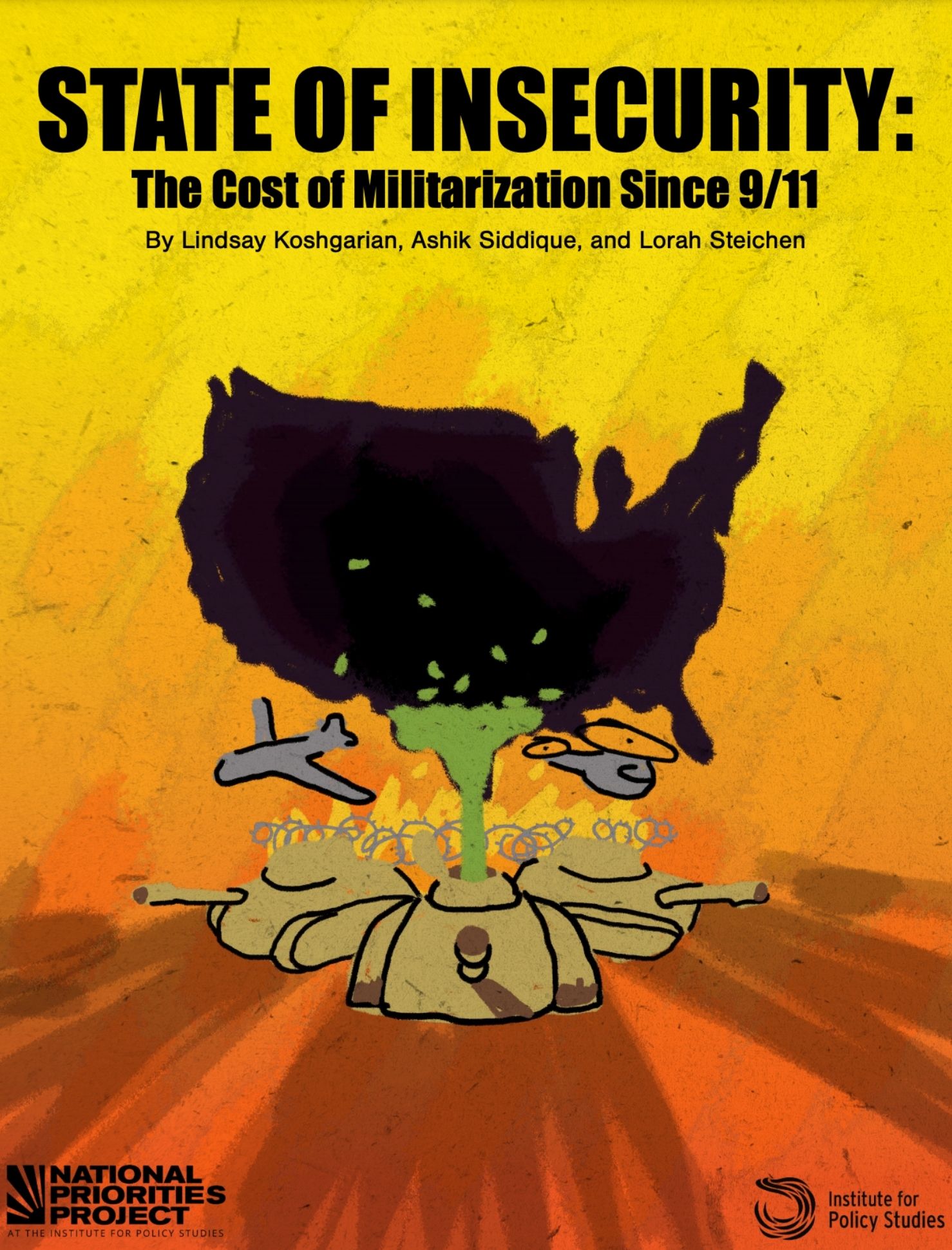
Key findings
- Over the 20 years since 9/11, the U.S. has spent $21 trillion on foreign and domestic militarization.
- Of that total, $16 trillion went to the military — including at least $7.2 trillion for military contracts.
- Another $3 trillion went to veterans’ programs, $949 billion went to Homeland Security, and $732 billion went to federal law enforcement.
- For far less than it spent on militarization since 9/11, the U.S. could reinvest to meet critical challenges that have been neglected for the last 20 years:
- $4.5 trillion could fully decarbonize the U.S. electric grid.
- $2.3 trillion could create 5 million jobs at $15 per hour with benefits and cost-of-living adjustments for 10 years.
- $1.7 trillion could erase student debt.
- $449 billion could continue the extended Child Tax Credit for another 10 years.
- $200 billion could guarantee free preschool for every 3-and-4-year old for 10 years, and raise teacher pay.
- $25 billion could provide COVID vaccines for the populations of low-income countries.
We include the cost of veterans’ benefits because military service and military activities give rise to the need for these benefits.
We include most programs in the Department of Homeland Security because of the agency’s origins in the post-9/11 response, although we exclude the Federal Emergency Management Agency (FEMA) because we do not consider its core mission to be a militarized one.
Federal law enforcement programs are included because counterterrorism and border security are part of their core mission, and because the militarization of police and the proliferation of mass incarceration both owe much to the activities and influences of federal law enforcement.
Unless otherwise noted, all figures in this report are based on Office of Management and Budget (OMB) budget authority data and are inflation-adjusted to FY 2021. Due to rounding, some figures may not add precisely.
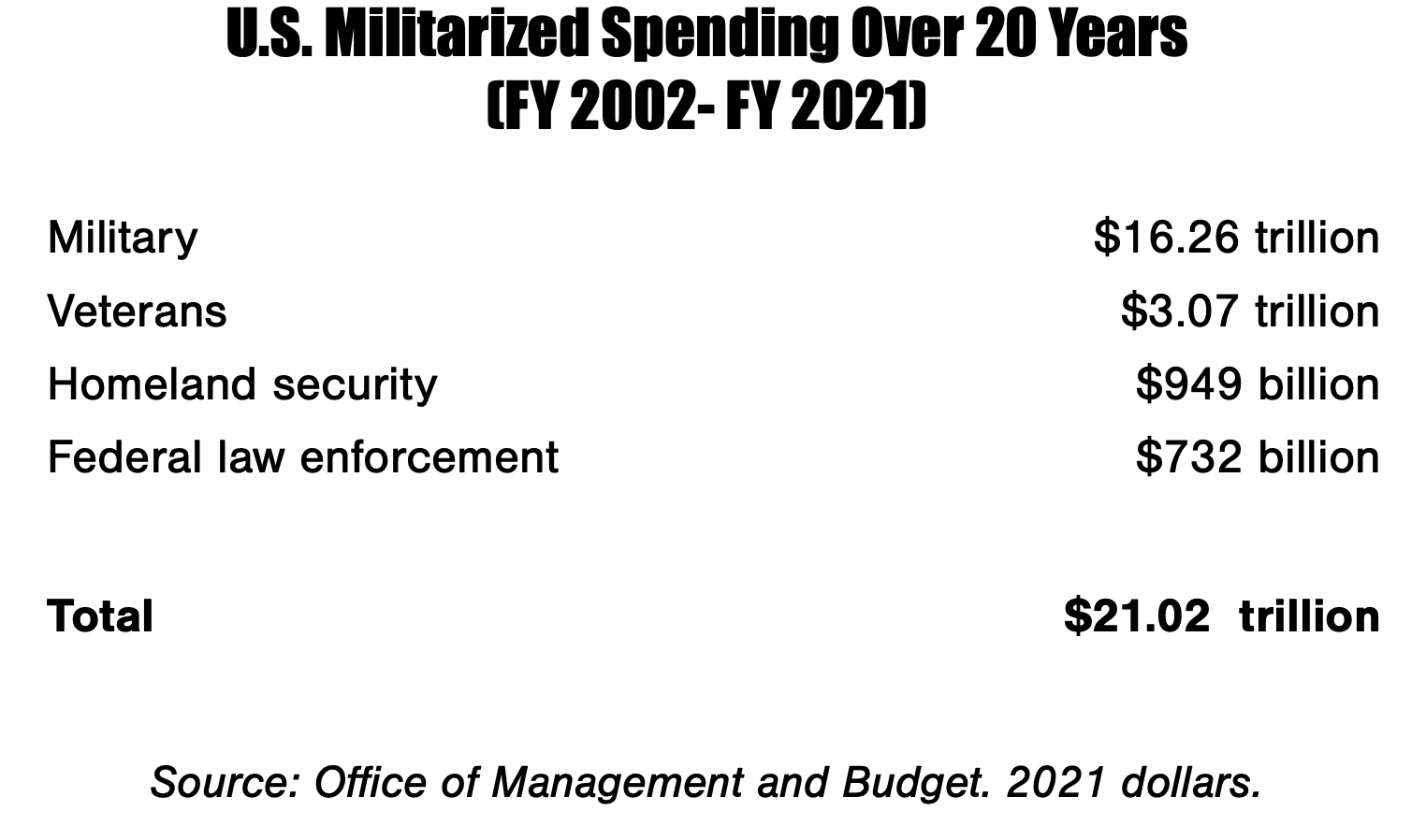
Over the span of 20 years, the War on Terror has expanded to dozens of countries, claimed 900,000 lives, and has cost trillions of dollars. Over this period, annual military spending has risen to higher than at any time during the Cold War or Vietnam War.
Beyond the forever wars, the U.S. military has more than 750 outposts in around 80 countries, with about 220,000 U.S. troops stationed permanently abroad as of June 2021.
As part of its supposed shift from the War on Terror to “great power competition,” the military is also looking to reinvest in nuclear weapons. The danger of these weapons far outstrips rationales for their continued deployment. Yet the military has planned a $1.5 trillion renewal program to keep U.S. nuclear weapons in service.
Altogether, military expenditures over the last 20 years totaled more than $16 trillion, including the budget for the Department of Defense, nuclear weapons and activities, and certain intelligence and military retirement costs. We also include aid to foreign militaries, and much smaller civil defense expenses including the selective service, military cemeteries, and others.
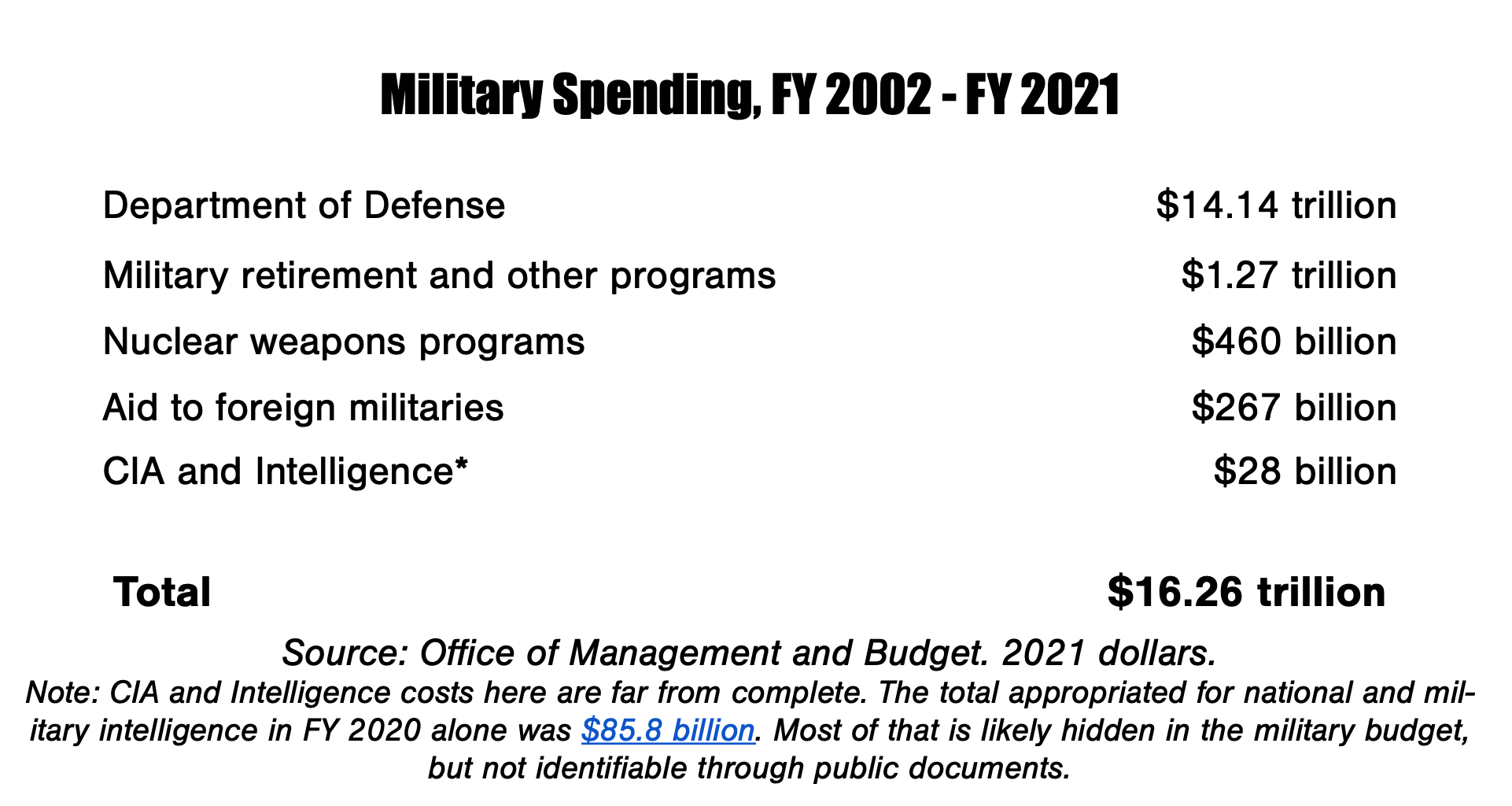
The services that the U.S. provides to military veterans have totaled $3 trillion over the last 20 years. Of course, these services are provided to veterans of many wars, not just the wars on terror.
But veterans of the war on terror have been subject to nonstop deployments over the last 20 years, taking a toll on their physical and mental health, family stability, and civilian career opportunities. Veterans suffer from high risks of suicide, homelessness, and family violence, among other long-lasting consequences of serving in U.S. wars.
The $3 trillion spent over the last 20 years reflects the cumulative impact of U.S. wars on those who have left military service.

The creation of DHS in 2003 rolled all or part of 22 different federal departments and agencies into a single department.
Despite the ostensible founding of DHS as a response and preventative measure against terrorism, it has instead become an agent of repression. DHS has surveilled political groups and infiltrated communities, violently repressed protest, and waged a war on immigration, often in direct coordination with the military and other law enforcement agencies.
The militarization of ICE and CBP has been well-documented, with cases of excessive force and racial profiling. The war on immigration has also become a lightning rod for white supremacy and violence, feeding growing white supremacist movements including those that carried out the January 6, 2021 insurrection at the U.S. Capitol. And, much like in local law enforcement, white supremacists have held positions of power in federal immigration agencies.
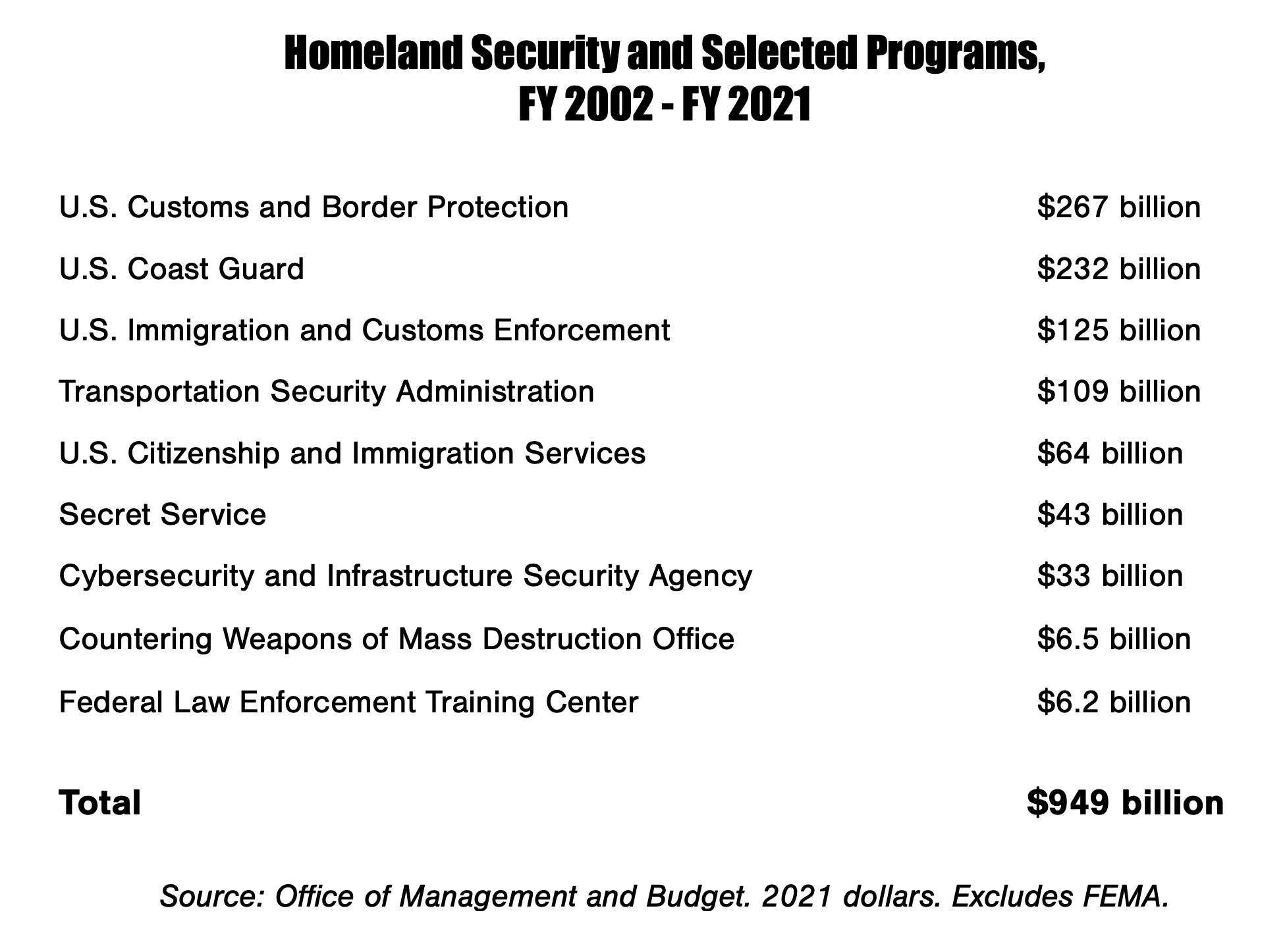
The Department of Homeland Security’s militarized approach to the border is echoed internally by federal law enforcement’s activities as part of the war on immigrants, the war on drugs, and the war on crime. Federal law enforcement activities have led to indiscriminate surveillance practices, racial profiling and racist outcomes, and mass incarceration.
According to the FY 2022 budget justification for the Department of Justice, 88 percent of its budget goes toward counterterrorism, border security, and violent crime.
Black and Latinx people bear the brunt of federal law enforcement. Hispanic people were the subjects of 54 percent of federal sentences in 2018, and Black people another 20 percent. Black people make up 38 percent of the federal prison inmates, far greater than their share of the population. In FY2018, just 1.9 percent of federal arrests were for violent offenses.
The FBI also has more than 90 offices overseas, and nearly half of its spending ($84 billion) over the past 20 years was considered defense-related. Likewise, the DEA has 91 overseas offices in 68 countries, the U.S. Marshals have three foreign field offices, and ATF has at least eight foreign offices.
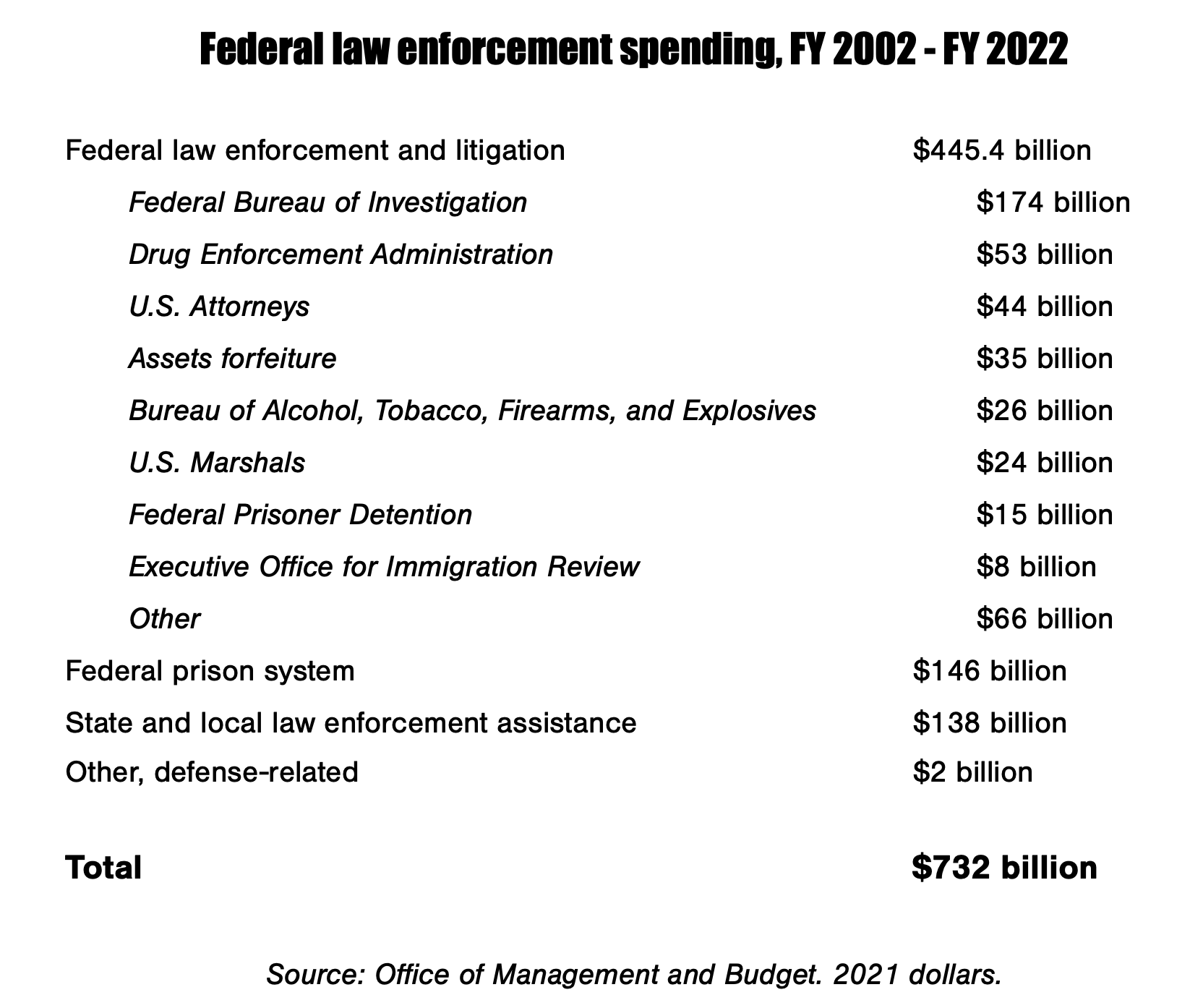
The militarization of U.S. domestic and foreign policy over the past two decades has wreaked havoc. It has cost lives and well-being for those caught up in our foreign wars and our domestic crackdowns alike, and has cost a fortune in the process.
What if, in the next 20 years, we invested just as deeply in our most critical needs?
Those needs are many.
The COVID-19 pandemic has cost more than four million lives worldwide, including more than 625,000 lives in the United States as of August of 2021. Yet just 51 percent of people in the U.S. are fully vaccinated, and dozens of countries have vaccination rates in the single digits or teens.
In the U.S., survivors face staggering medical bills in some cases, while 15 million people are behind on rent and face eviction once government eviction moratoriums end. The havoc COVID has wreaked on the economy just compounds the economic inequality the country already faced.
While the world struggles to beat back the pandemic, growing parts of the world are either on fire or underwater. The wildfires and floods of summer 2021 have given the world a taste of just how serious a threat the climate crisis is.
All of these threats require concerted action to save lives and livelihoods, and that requires investment.
Full investment in solutions to these problems could transform our country, and our world. Investments could fully decarbonize the U.S. electric grid, create millions of good-paying jobs, erase student debt, make permanent the extended Child Tax Credit, guarantee free preschool, and vaccinate the populations of low-income countries — and still not come close to $21 trillion.
The investment of $21 trillion in militarization over the past 20 years is proof of concept that the U.S. government has both the means and the political will to act on its priorities. The task of the next five, 10, and 20 years will be to shift those priorities to better meet the array of threats we face. It is entirely our decision to make.

